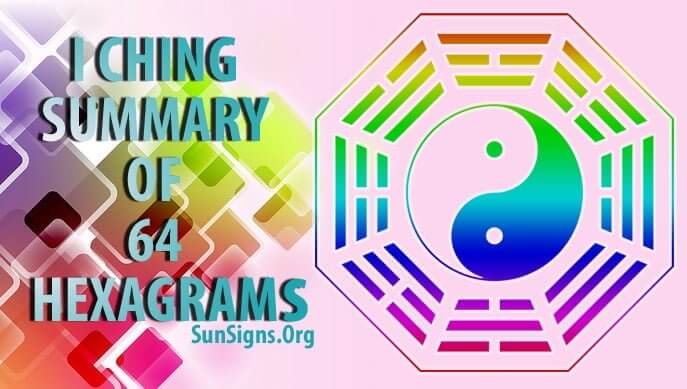

These myths describe how he identified the trigrams that arose from his understanding of the connection of all things, through the interplay of yin and yang. He saw how the sets of three solid or broken lines, the trigrams, reflected the movement of energy in life on Earth.Ī similar myth describes Fu Hsi's contemplation of other patterns in nature, including animals, plants, meteorological phenomena, and even his own body. Knowing that true wisdom came from the direct and close observation of nature, he had a sudden realization of the significance of eight symbols he saw on the turtle's back.

In one tale, Fu Hsi, the first emperor of China (2852–2737 B.C.), is said to have observed a turtle emerging from the Yellow River. There are a number of myths surrounding the origins of the eight trigrams and the development of the I Ching divination system.
#THE I CHING FREE#
Learn more about this ancient oracle by getting your own FREE I Ching Reading now » The I Ching's actual discovery and much of its early history are the stuff of legends. Its first interpretive text was composed around 1000 B.C. It is also one of the oldest books in the world. The I Ching is the oldest of all the classical divination systems. These eight trigrams, known as "Hua," also serve as the compass points in the ancient art of placement known as Feng Shui (pronounced fung-shway). Divide the six-line forms in half and you get trigrams (three yin or yang lines) that represent the Chinese version of the eight fundamental elements: sky, earth, thunder, wind, water, fire, mountain, and lake. Each hexagram can be analyzed in a number of ways. The interpretations of the sixty-four hexagrams describe the energy of human life divided into sixty-four types of situations, relationships or dilemmas. Examples of the yin/yang polarity are female/male, earth/heavens, dark/light, in/out, even/odd, and so on. Yin/yang is the fundamental duality of the Universe whose dynamic tension gives shape to all phenomena and the changes they go through. The Chinese I Ching, or Book of Changes in English, represents sixty-four archetypes that make up all the possible six-line combinations of yin and yang, called hexagrams. Often the ancient Chinese of the I Chingallows for multiple meanings.The History of the I Ching Find out how the world's oldest oracle evolved The webinar is addressed both to newcomers and to ‘old I Ching hands.’ Our main reference will be the Eranos I Ching, translated by Rudolf Ritsema and Shantena Sabbadini, but you are welcome to keep at hand your favourite I Ching and to compare passages. In this webinar we will explore the practice of consultation in detail, answering, as far as possible, all the questions concerning this mysterious activity, from the appropriate formulation of the question to the specific function of the various sections of a hexagram in the answer. And the intuitive practice of ‘rolling the words in one’s heart’ is grounded in the exact discipline of handling the forty-nine yarrow stalks or the three coins and reading one’s answer in the book. The wild images from a shamanic tradition three thousand years old are framed in the rigorous system of yin and yang. The practice of the I Ching oracle is a form of introspection bridging different dimensions, unconscious and conscious, imaginal and rational, heart and mind.


 0 kommentar(er)
0 kommentar(er)
